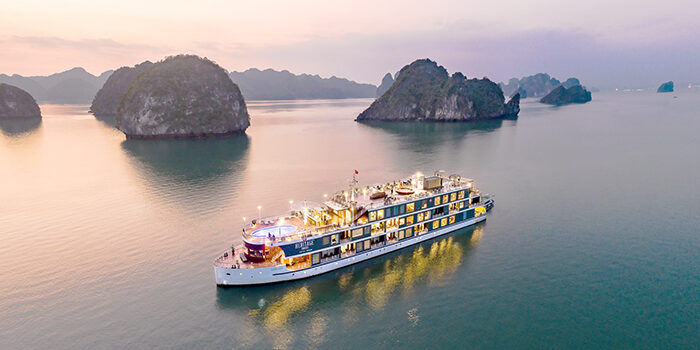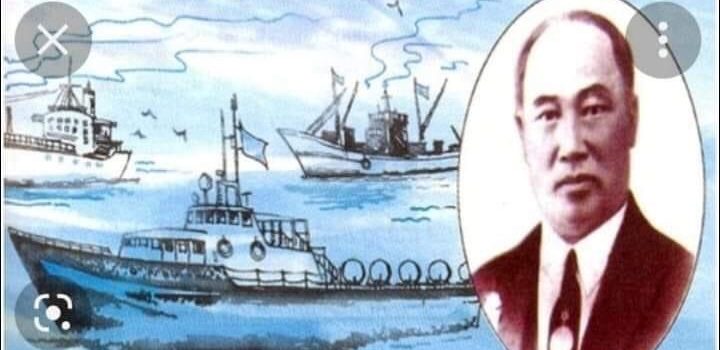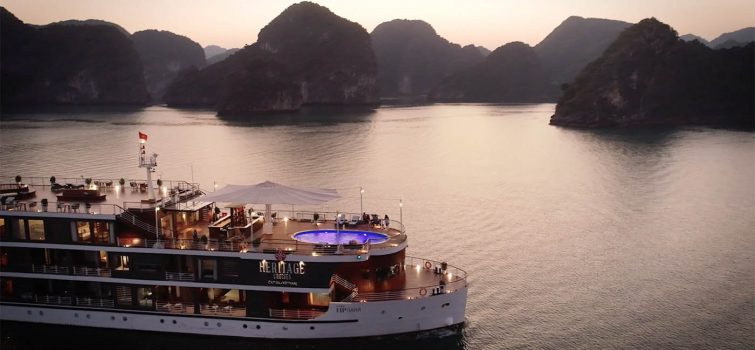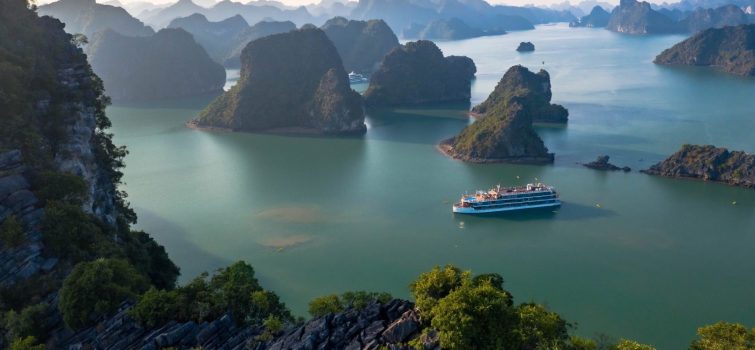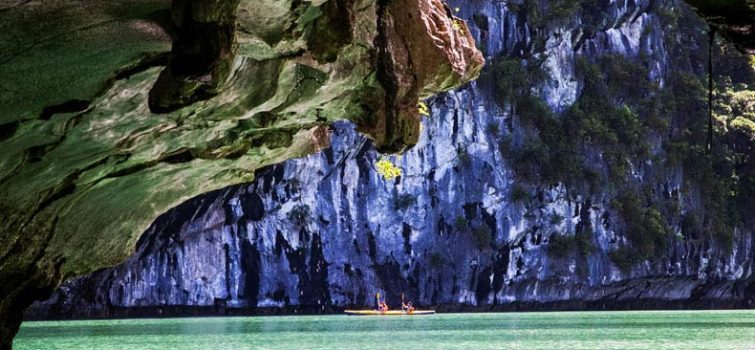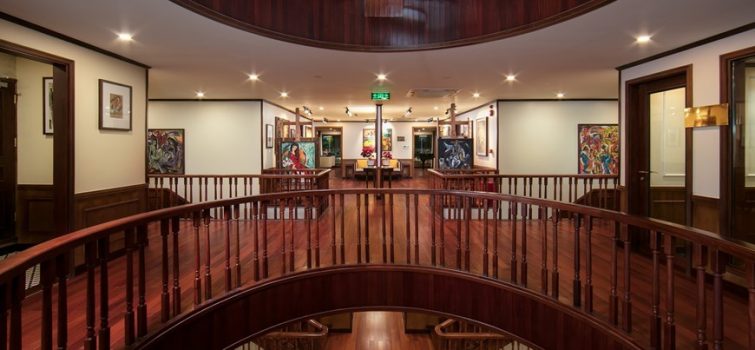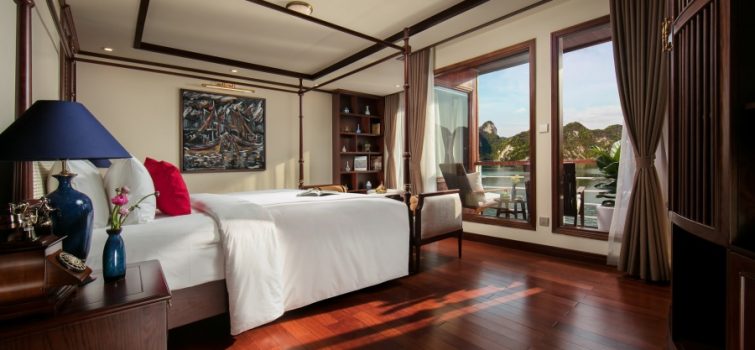Experiences with Lux Cruises
(Vietnam Today) – Nowaday, luxury yatchs have become a new tourist trend in Vietnam. Lux Cruises luxury cruise line provides customers with top-quality services and constant improvement in experiences for travelers, especially international travelers.
Emperor Cruises and Heritage Cruises are 5-star yachts and aim to provide the best experience for customers. However, the two brands also have a lot of differences in design ideas, product lines, and target customers.
The Heritage Binh Chuan Cruise, inspired by Vietnam’s King of Cruise Ships, Bach Thai Buoi (1874 – 1922), is the first yacht designed in a boutique concept style, suitable for many groups of guests, from young people, families, and elderly customers who like to participate in activities on board. Operating in Lan Ha bay, Heritage Binh Chuan Cruise is one of the first cruises to have the largest swimming pool in the North Bay with an exhibition space for paintings by the famous painter, Pham Luc, and plenty of space for visitors to visit and experience. With 20 spacious suites all provided with private balconies, panoramic windows overlooking the bay and bathrooms all with standing and lying bathtubs, visitors will truly feel comfortable and relaxed.
.jpg)
Meanwhile, The Emperor Cruises Legacy Halong was inspired by the Bao Dai emperor (1913 – 1997) and was completely designed in the royal style of the 1930s. It is the first cruise to operate in Ha Long bay and Bai Tu Long bay, offering package service, including free drinks, unlimited massage service, and 24/24 butler service. Although Emperor Cruises Legacy Halong has only 10 cabins, all rooms are suites with huge areas, amenities with private balconies or panoramic windows, and a Jacuzzi or bathtub. Customers can experience total relaxation sitting by the Sunset Bar and sunbathing on the deck while enjoying cocktails, listening to ocean rhythms and watching the sunset. Emperor Cruises also offers comprehensive wellness products to help travelers have the most fulfilling experiences on their journey.
If you choose to stay at the Nha Trang Emperor Cruises, you can immerse yourself in Trinh music nights while moon-watching in the bay and enjoying high-quality cuisine. You can also choose to rest on the beach in Nha Trang bay or participate in scuba diving tours at Mun island, have afternoon tea and explore the art of enjoying Vietnamese tea.
.jpg)
Lux Cruises also makes an effort to improve each guest meal experience by interacting with wine consultants and hosting a cocktail party to welcome the sunset on the pool bar and swimming pool. Award-winning chefs will create new seasonal dishes and enhance the food experience with new styles, especially the breezy dinner in the middle of the bay with music that will surely give every customer unforgettable memories.
Coming aboard on Lux Cruise yachts, customers can participate in scuba diving, sail to get to the beach area, and learn about the stories of Vietnam’s first luxury cruise brand.
Tuan Son
HANOI: The former capital of French Indochina and now the heart of the nation
In autumn of 1010, Emperor Ly Thai To decided to move the capital of the kingdom to Dai La (Hanoi today) from Hoa Lu (present Ninh Binh). He was mindful that the place was an ideal location with many advantages for wet rice farming and traffic thanks to a number of waterways, especially the Red River, the backyard of Ba Vi mountain, promising the long-term prosperous development of a capital and a nation. After moving the capital and renaming it Thang Long, Ly Cong Uan ordered the construction of a citadel to protect the city. Since then, Thang Long has become the political, economic, and cultural center of the country.
When the Nguyen dynasty was established in 1802, Emperor Gia Long moved the capital to Hue. Thang Long was no longer the capital, its Chinese characters was changed from 昇龍 (“Rising dragon”) to 昇隆 (“Ascent and prosperity”), aiming to reduce the sentiment of Le Dynasty. Emperors of Vietnam usually used dragon (龍 long) as a symbol of their imperial strength, and power. In 1831, the Nguyen emperor Minh Mang renamed it Hanoi (河內, “Between Rivers” or “River Interior”). Hanoi was occupied by the French in 1873 and passed to them ten years later. As Hanoi, it was located in the protectorate of Tonkin and became the capital of French Indochina after 1887.
 The city was occupied by the Imperial Japanese in 1940 and liberated in 1945, when it briefly became the seat of the Viet Minh government after Ho Chi Minh proclaimed the independence of Vietnam. However, the French returned and reoccupied the city in 1946. After nine years of fighting between the French and Viet Minh forces, Hanoi became the capital of an independent North Vietnam in 1954. The French Army withdrew that year and the People’s Army of Vietnam and International Control Commission occupied the city under the terms of the 1954 Geneva Conference. Following the end of the Vietnam and US war, Hanoi became the capital of a reunified Vietnam when North and South Vietnam were reunited on 2 July 1976.
The city was occupied by the Imperial Japanese in 1940 and liberated in 1945, when it briefly became the seat of the Viet Minh government after Ho Chi Minh proclaimed the independence of Vietnam. However, the French returned and reoccupied the city in 1946. After nine years of fighting between the French and Viet Minh forces, Hanoi became the capital of an independent North Vietnam in 1954. The French Army withdrew that year and the People’s Army of Vietnam and International Control Commission occupied the city under the terms of the 1954 Geneva Conference. Following the end of the Vietnam and US war, Hanoi became the capital of a reunified Vietnam when North and South Vietnam were reunited on 2 July 1976.
Today, Hanoi is still a city of rivers, of which the Red River is the largest. For Hanoians, the Red River is not only a source of life, it is also a reflection of Vietnamese history and the capital city’s long prosperity. Heritage buildings such as churches, grand cathedrals, opera houses, clocks, colonial buildings, villas, museums, palaces, river ports, and iron bridges remain unchanged though some have disappeared. Many boulevards with French names have changed to Vietnamese names. Regrettably, the heritage street Bach Thai Buoi was changed to Nguyen Huu Huan alley in 1954 on the bank of Red River, but his former two-story office houses in Hang Muoi Street remain intact facing the clock with his former inland waterway port near Chuong Duong Bridge.
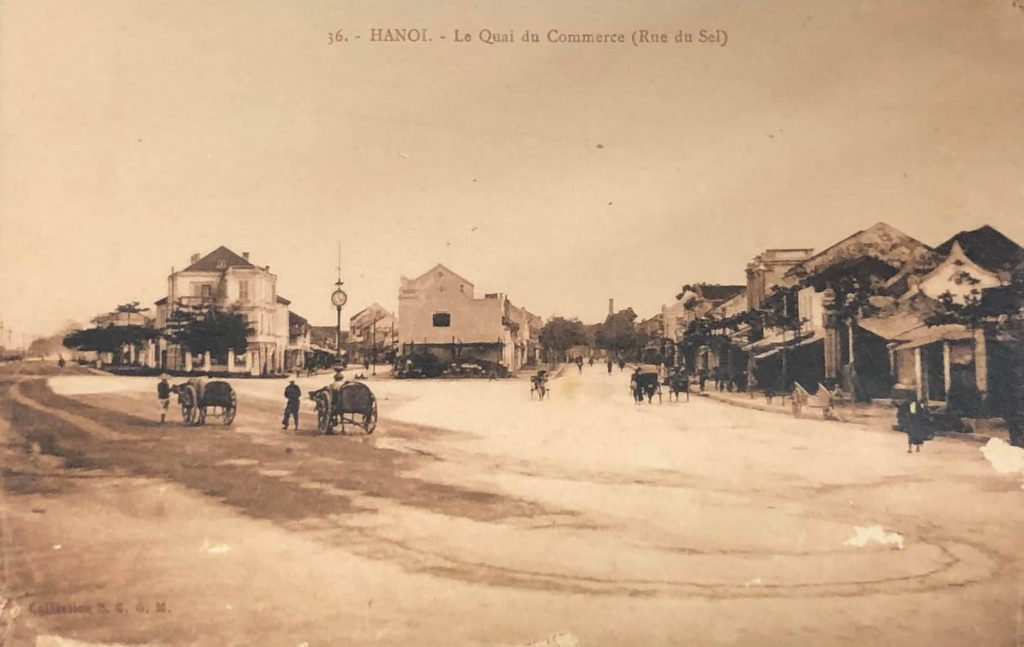 High-rise buildings are rare in this city which is striving to retain its character. Grand colonial buildings, tranquil lakes, and a maze of narrow streets provide intriguing contrasts. Hanoi is an elegant city with tranquil Hoan Kiem Lake (Grand Lac on postcards) at its heart. North of the lake are the bustling 36 guild streets of the Old Quarter, each street named after the trade that used to take place there. Hanoi is truly a city of contrasts with areas of wide boulevards and large colonial buildings, reflecting its period as a French Protectorate, and other areas truly Vietnamese with a muddle of narrow streets which bustle from dawn to dusk.
High-rise buildings are rare in this city which is striving to retain its character. Grand colonial buildings, tranquil lakes, and a maze of narrow streets provide intriguing contrasts. Hanoi is an elegant city with tranquil Hoan Kiem Lake (Grand Lac on postcards) at its heart. North of the lake are the bustling 36 guild streets of the Old Quarter, each street named after the trade that used to take place there. Hanoi is truly a city of contrasts with areas of wide boulevards and large colonial buildings, reflecting its period as a French Protectorate, and other areas truly Vietnamese with a muddle of narrow streets which bustle from dawn to dusk.
Similarly to the guilded age of Europe, “Hanoi’s 36 districts” is Vietnam’s version of the guild concept. In the past, as artisans moved to the capital city to do business, they gathered together in this area to share the resources and built communal houses and their temples. As a result, many of the streets were named after the crafts sold at that individual street. Pho Hang Muoi (Rue du Sel or Salt Street), Pho Hang Bun (Vermicelli), Pho Hang Ma (Paper Product), Pho Hang Bac (Silver), Pho Hang Non (palm-leaf conical hat), … are examples of the streets carrying the name of the products sold there. Explore my rich collection of postcards about Hanoi’s old guild streets and iconic buildings of the capital of Indochina and now the heart of Vietnam.
What is a travel management company?
Global business travel industry spending was expected to hit USD 1.7 trillion by 2022, and despite the crisis, business travel is bouncing back fast. It means many businesses are now looking for a TMC: Travel Management Company so that they’re as prepared as can be for when business travel returns to 100%.
A travel management company is essentially a travel agent or travel agency for corporate travel needs. As technology evolves, we’re beginning to see more personalized TMC solutions providing so much more than the ability to only book travel. Business travel programs need TMCs that are more tech-savvy than ever before.
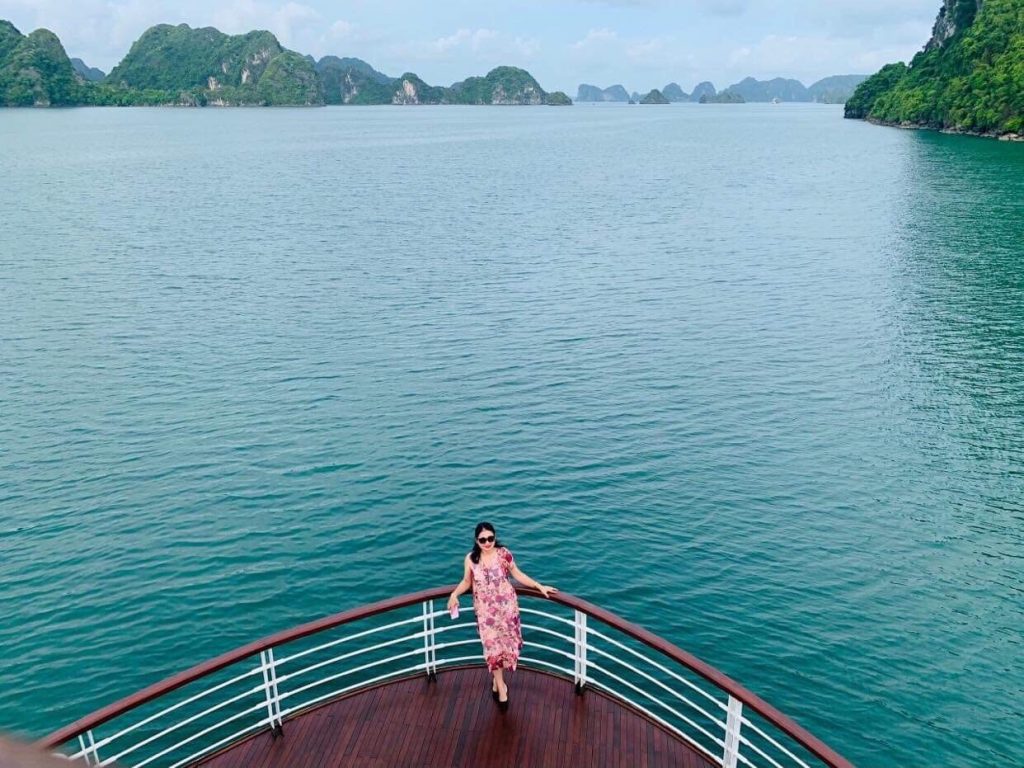
The Definition of a Travel Management Company (TMC)
A Travel Management Company (TMC) is a travel agent that fully manages the business travel requirements delegated by an individual, company or organisation to fundamentally save clients both time and money.
A TMC is also commonly known as a business travel agency or corporate travel provider.
As opposed to the traditional travel agent, which will usually deal with occasional leisure travel needs, a travel management company provides on-going services with the aim of providing cost savings, keeping control of a travel policy and allowing the client to spend less time on time-consuming travel arrangements.
A travel management company will typically use a GDS (Global Distribution System like Sabre or Amadeus) displaying real time availability to book flights, hotels and cars as well as other trusted software systems like Evolvi for train bookings.
Services Provided by a Travel Management Company
As well as simply making flight or hotel reservations, the TMC will offer many other ancillary services such as aircraft charter, airport lounges, parking and transfers, hotel bed requests, car hire, chauffeurs, foreign exchange, group travel, hotel bill backs, insurance, leisure travel, marine travel, meal requests, meet and greets, passport and visa procurement, rail tickets, roadshow services and venue sourcing.
Company and individual profiles are safely stored ensuring all personal travel requests are adhered to within an overall travel policy with every booking.
Other management services will often include MIS reporting, account management, risk management, cost/expense management, traveller tracking/security and travel policy adherence. Many TMCs will now also provide online self-booking tools whereby organisations can make their own flight and hotel reservations and bookings. Travel management companies will also typically negotiate with vendors/suppliers to provide discounted fares and loyalty programs.

The Future of the Global Travel Industry
What’s the future of the global travel industry? As economic prosperity rises throughout the world, the travel industry will be flooded by people from all over the world, and businesses are going to be at the forefront of this growth pushing their services to meet demand.
Expect the top 20 travel companies in the world to continues pushing the industry to new heights. The main thing to keep in mind going forward as more people travel from all over the world is that the future will be about more travelers and easier to reach places.
Rank Company Sales (USD billions) Headquarters No. of employees
1 Expedia Group $99 billion Bellevue, Washington, USA 24,000
2 Booking Holdings $92.7 billion Norwalk, Connecticut, USA 24,500
3 American Express Global Business Travel $33.7 billion Jersey City, New Jersey, USA 17,400
4 BCD Travel $27.1 billion Utrecht, Netherlands 13,800
5 CWT $25 billion Minneapolis, Minnesota, USA 18,000
6 Flight Centre $16 billion Brisbane, Queensland, Australia 20,600
7 Travel Leaders Group $7.12 billion New York City, New York, USA 4,000
8 American Express Travel $6.27 billion New York City, New York, USA 5,000
9 Direct Travel $5.4 billion Centennial, Colorado, USA 2,000
10 Corporate Travel Management $5 billion Denver, Colorado, USA 725
11 Fareportal $4.32 billion New York City, New York, USA 3,700
12 American Automobile Association $3.94 billion Heathrow, Florida, USA 4,401
13 Travel and Transport $3.2 billion New York City, New York, USA 1,610
14 Frosch $2.05 billion New York City, New York, USA 1,125
15 Omega World Travel $1.41 billion Fairfax, Virginia, USA 540
16 JTB Americas Group $1.37 billion Torrance, California, USA 2,234
17 World Travel $1.26 billion Exton, Pennsylvania, USA 523
18 World Travel Holdings $1.2 billion Wilmington, Massachusetts, USA 1,239
19 Ovation Travel Group $1.16 billion New York City, New York, USA 585
20 ATG $857 million New Albany, Ohio, USA
Best Boutique Cruise Line
Embark on a journey back in time to Vietnam in 1930s with Heritage Cruises Binh Chuan Cat Ba Archipelago boutique lifestyle cruise in Lan Ha Bay in Cat Ba Archipelago. Combining the classical charm of French Indochina with a sense of timeless chic that only the Lux Cruises can provide, the cruise is as much an art and heritage space as it is a 5 star cruise. Heritage Cruises Binh Chuan Cat Ba Archipelago invites guests to relive the romance of this bygone era in their boutique cruise which offers all the comforts of the 21st century.
The most luxurious cruise in Vietnam has many cultural features, bringing with it the stories of cultural and historical heritage, fine art, architecture, fashion, and the quintessence of Vietnamese cuisine. The yacht is newly built based on the Binh Chuan ship built by the ship king Bach Thai Buoi, the first Vietnamese to launch a ship from Hai Phong to Saigon. From the point of departure 100 years ago, today’s Heritage Cruises Binh Chuan takes travelers on a journey to discover Lan Ha Bay in style, a vast sea area with hundreds of islands, lagoons, and beaches, large and small, an experience recognized by the world. Channel 14 describes it “as beautiful as a dream” and Leonardo DiCaprio praises the ‘paradise’ beauty of Lan Ha Bay.
https://www.youtube.com/watch?v=45UNROguoNM&t
On the cruise, travelers can discover the authenticity of Lan Ha Bay, Binh Chuan Heritage Cruise will bring travelers into a traditional cultural space, the glorious legend of the intangible heritage, and enjoy the beauty of the natural heritage of Vietnam. Heritage Binh Chuan Cruise will bring the most authentic experiences with a minimum of 40 guests and a maximum of 60 passengers on a magnificent and sophisticated cruise operating in the Gulf of Tonkin. Savored travelers will immerse into the culture, history, art, and people of Vietnam when cruising on a unique cruise amidst natural wonders. On this heritage cruise, travel connoisseurs can go upstream of history and culture to learn the business story of “Vietnam’s king of ships” Bach Thai Buoi and the life of the “Vietnamese Picasso“, Pham Luc, through a rich collection of 100 of his works collected and introduced by the owner Pham Ha in various locations.
Heritage Binh Chuan received the most prestigious award, TripAdvisor 2022 Travelers’ Choice Awards “Best of The Best”. Luxury Lifestyle Awards 2020. Lux Cruises to expand the brand to Quy Nhon, Nha Trang, Phu Quoc in Kien Giang province, and Cat Ba archipelago in Hai Phong city, for unique yachting experiences in the coming year.” Start our first expeditions on the Gulf of Tonkin and further expand between Hanoi and Halong Bay on the Red River and its tributaries, along the coastline of Vietnam, on the Mekong River and to other Southeast Asia countries.
Cac-Ba
Many legends and mythologies surround the island’s name
From my vintage postcards of French Indochina, I treasure a rich collection about local life, people, landscape, townscapes and villages in the early 1930s, as well as some of the many legends and myths which have been handed down the generations.
The first is the legend of the name ‘Cac-Ba’, which means Island of women in Vietnamese, where, once upon a time the island used to be the realm of women who grew vegetables and supplied food to the men so that they could have the strength to fight off invaders.
Cat Ba island is also characterized by the Kim Giao tree (scientific name Nageia-fleury) whose origin is linked with an ancient legend. These species grow in Cat Ba National Park and the most notable characteristic of these species is that the wood changes color when it comes into contact with any toxic substance. Therefore, in the past, this kind of wood was often used to make chopstick for the king.
The legend surrounds a romantic love story between a talented man, Kim Ngan, and a beautiful princess, Giao Thuy. The man was poisoned by envious and sycophantic courtiers and died. The princess cried so much for her lover that she lay down by his tomb and died with grief. Afterwards, two trees grew from the tomb and local people named the species Kim Giao in their honor.
Cat Ba is the largest of the 366 islands, spanning over 260 km2, that comprise the Cat Ba Archipelago, which makes up the southeastern edge of Halong Bay, and is a new hotspot for cruises, cultural activities, heritage travelers, and holidaymakers.
The Picasso of Vietnam – Painter Pham Luc
Painting is like exercising for painter Pham Luc. If he doesn’t paint something every day he feels slightly ill, which perhaps explains his prolific output and reputation as Vietnam’s Pablo Picasso.
Born in 1943, Luc has been around paint brushes for some 70 years. From the age of three he tried to turn things into paint brushes. It could be a piece of brick or charcoal, a tree branch, or a stone, and everywhere was his canvas. Often, he was scolded by his neighbors, whose house walls he used to express himself. Luckily, he later found a wide sand bank by the riverside near his home, where he could paint on the sandy canvas with a tree branch.
Growing up during wartime, the young Luc became a soldier after graduating from the Hanoi College of Fine Arts (now the Vietnam University of Fine Arts). But his passion for painting never ceased. As one of his hands held a gun, the other always held a brush. His constant companion has been paper, a brush, and colors. “The mission of a painter is to record what he observes,” Luc explained, “Life is so colorful. I don’t want to miss a thing.”
At times so focused on not missing a moment of life, he in turn often missed a train or was taken advantage of by thieves. Losing his tools was a disaster because such things were scarce in wartime. Necessity, though, is the mother of invention. Again, he tried to turn things into a canvas, such as sackcloth or a hammock, which these days his fans crazily hunt for.
Luc never limits himself to a particular style either. From his studies he took on styles from the French school of European art, Chinese water colors in Asian art, and four of the most famous and successful Vietnamese painters since 1945. Nghiem, Lien, Sang and Phai, who all graduated from L’Ecole des Beaux Arts de l’Indochine, diverged on totally different paths, with Nghiem’s convention, Lien’s softness and femininity, Sang’s strength, and Phai’s realism, so Luc’s art reflects where East meets West. He also challenges himself to use different mediums including oil paintings, painting on rice sacks, lacquer, silk paintings, paper, and wood engraving.
After finishing his army service, he started different canvases in every corner of his home, which became his work space. When painting a lacquer work and getting some of the materials stuck, he may change it to an oil painting and continue in a different mood. “Just leave me alone in a room with brushes, colors and an old radio playing pre-war Vietnamese music and I’ll work spontaneously, by feeling, without sketches,” he said.
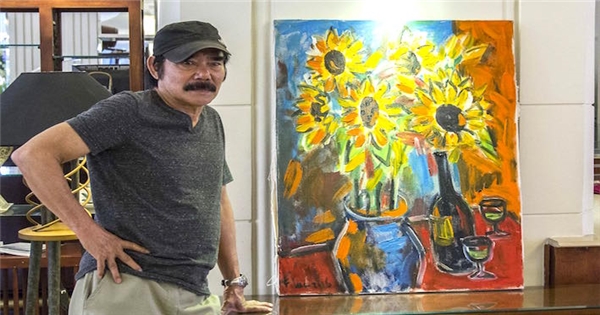
Due to regular headaches from high blood pressure, Luc has suffered from insomnia since he was 14. Many new ideas flash into his mind at night when he tosses and turns in bed. He usually has no idea whether it comes from reality or a dream, but he quickly gets the idea down on canvas. Whenever he touches a brush, his headaches ease and he feels like he is dreaming. The next day he sometimes forgets his nocturnal creativity, waking in the morning to be pleasantly surprised at the new addition to his collection.
Ben Wilkinson, representative of Harvard Kennedy University (now USA Fullbright University) in Vietnam, is a Pham Luc collector. He noted that “Pham Luc’s paintings are like windows that we can look through to understand more about the country and the people of Vietnam, both in the past wartime and the present.”
The characters in Luc’s paintings are also diverse, such as a local market, Tet paintings, heritage depictions of Quan Ho, Ca Tru and A Dao songs, Cheo or Tuong theatre the hero Thanh Giong, or the poet Nguyen Du. Women seem to inspire him more. It may be a woman in an old dress giving her son a bicycle ride during wartime, a woman looking for mussels in modern times, or an old woman selling some fruit.
His sympathy towards and love of women in his paintings brought him true love. A French woman who fell in love with his art bought many of his paintings on credit. Three years later she took him to a villa, which was the payment, and proposed to him. With his wife’s support, his paintings have been displayed in Europe and increased his fan base.
Among modern Vietnamese painters, Luc is the only one who has a fan club collecting his work. More than 100 of its members have some 6,000 of his paintings and regularly hold exhibitions. One, Tony Olive from Australia, who has 100 of Luc’s paintings, opened an exhibition in 2009 and every piece was sold. He felt regret at the scale of the exhibition’s success, however, and negotiated to buy back four of the paintings.
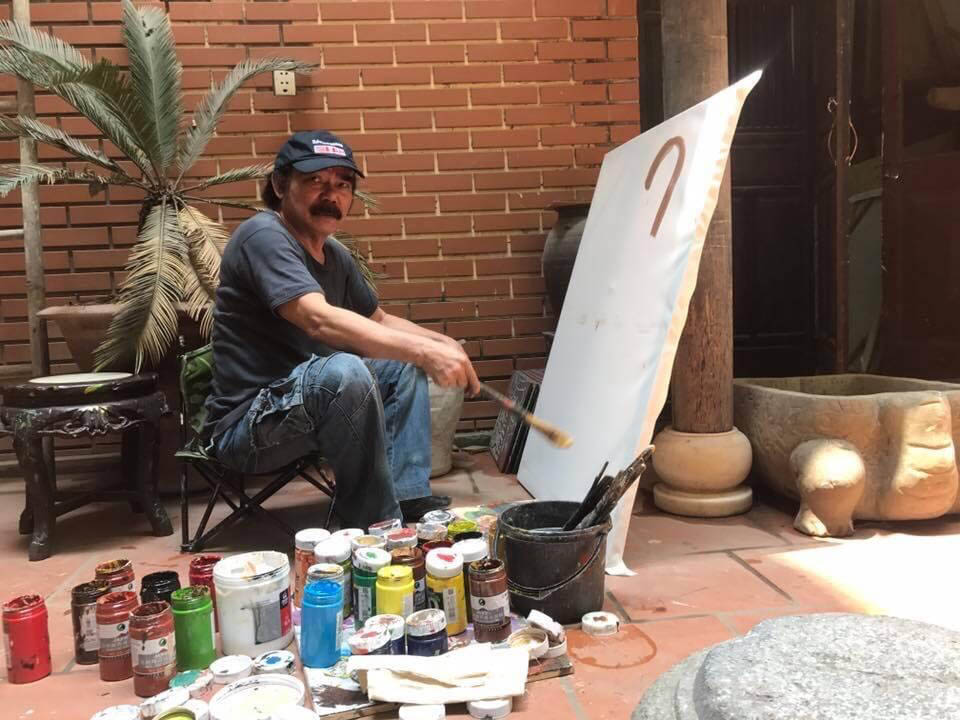
Paintings on Rice Sacks
Paintings on Rice Sacks have become synonymous with the artist Pham Luc in Vietnam. The artist, a former military painter, has experienced many battles in his lifetime. He indicates that the mission of the military painter is honest reflection about the life of people in the battlefield, what he observed and how he felt during the marches. The villages and people who helped him when he got hurt, and the fierce battlefields he passed through are featured in his works.
He painted hundreds of paintings on rice sacks made of jute or synthetic fiber rope from the Soviet Union and China. The idea to use rice sacks came about as he lacked the necessary materials to paint on, and rice sacks were plentiful.
He revealed that the first rice sack paintings were created with the artist Bang Lam in 1965. Pham Luc had to use lubricating oil from cars and trucks to draw because he lacked paints. Every character, image, and depiction in the paintings are associated with his military compatriots. Unfortunately, many paintings were damaged by bombs and ammunition.
War scenes often appear in his paintings, with subjects such as an old mother taking care of wounded soldiers, two teammates piggybacking injured soldiers back to the unit after a battle, a pregnant wife looking up at the image of her sacrificed husband, and militia girls carrying guns. Pham Luc also painted nudes on the sacks, a rather sensitive topic and a taboo in the military.
He had to use his imagination because there were no female models, and the finished pieces were often concealed. In one piece he depicts Vietnamese women soldiers taking a bath in the Truong Son Range after he had accidently come across them. In his paintings, those images bring a pure and romantic setting to the war.

Pham Luc has a distinctive style, one that reflects the culture and history of Vietnam. Many foreign and domestic collectors are proud of owning one or more of his rice sack paintings. In 2013, due to ill health, the artist stopped drawing and exhibiting this type of painting. Because of these changes, the rice sack paintings have become more sought after.
When asked why he had quit painting on rice sacks, the artist explained, “This was my toughest decision, but I’m very happy about my first exhibition without rice sack paintings. In any solo or collective exhibition, the rice sack paintings always make me different. This material reflects the misery of the whole nation at the time, and that has touched many people. But I think nothing is forever nowadays. The artist must also portray life with pen strokes and canvas.”
In a recent interview with writer Nguyen Ngoc about Pham Luc, Thomas J. Vallely, Director of the Harvard Vietnam Program, said his favorite place in Vietnam was not a city or a town but Luc’s concrete studio house. Whenever he visits Luc he talks about art and has learned new things about Vietnam, past and present. He sees Luc’s work as being rich in culture, history and heritage, through varied and diverse themes, with an artistic language on war and the difficulties and sorrows of life, making his creative value not just Vietnamese, but universal.
A masterpiece in the natural wonder
A touch of heritage in the sanctuary of the senses
By Waseem Ahmed
Vietnam’s first boutique cruise brings heritage alive, only 90 minutes away from Hanoi. Heritage Cruises showcases the country’s art, history, culture and gastronomy in the Halong Bay region.
The cultural and artistic heritage, as well as the spirit of patriotism of the entrepreneur, Bach Thai Buoi, were the inspirations for the owner of Heritage Cruises as he planned thematic experiences that will awaken the senses of guests traveling deep into the heart of Halong Bay.
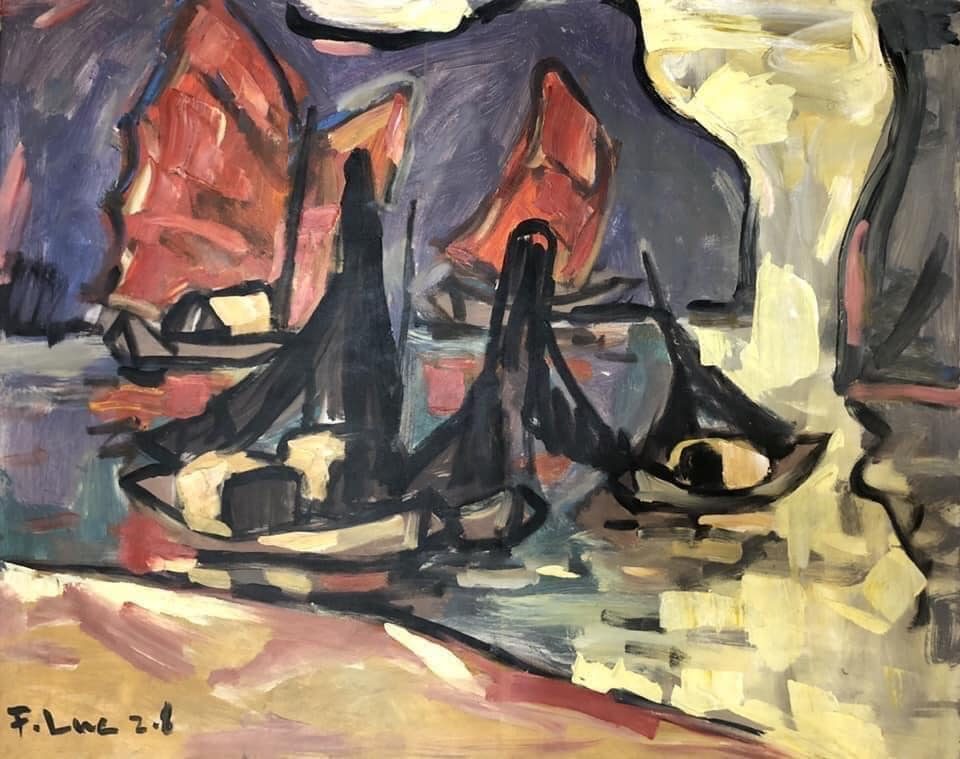
With its haute cuisine complemented by superior service, Heritage Cruises will shape the design of brand-new cruise ships and lead new boutique trends in Vietnam. Cruising is all about you and travel is about the destination, the experiences, and the memories.
For luxury travelers, the criteria for a holiday have become immutable by default: an attractive space with views over the mountains or sea, a variety of dining venues, tantalizing menus, attentive service from the heart, and outstanding facilities for discovering, exploring, immersing and relaxing on board.
With Heritage Cruises, you will be impressed by the stylish, luxurious architecture and attention to detail, where there is a work of art around every corner and everything is extremely tasteful. Our owner collected a rich collection of postcards, stamps, antiquities, ceramics, pottery, artworks, and folk paintings bringing Vietnamese culture to life.
One of the biggest, most adventurous, and most pioneering innovations in Vietnam is Lux Cruises, because of our million-dollar art collection on board. Many people think that sun, heat, wind, natural light, humidity, and sea salt can damage the paintings, but in fact the opposite is the case since the humidity is always 50% on the yacht, and the average temperature is around 72 degrees F or 22 degrees C, the ideal temperature of museums when they want to preserve their paintings well.

Loving beauty is enjoyable, but creating beauty is art. Paintings beautify and brighten up the décor space on the cruise ship. When hanging the paintings, we must be sure to avoid shaking them, but they must be easy to remove in case of fire. Special care must be taken in case of stains, with periodical maintenance by experts, and the most precious paintings are covered. The paintings are not only beautiful, but even more, the paintings of painter Pham Luc tell the story of war and peace, traditional culture, heritage, and the development of Vietnamese society through each period, which is where their true value lies. This is a unique privilege that only passengers of Heritage Binh Chuan can enjoy. 1 new message (heritagecruises.com)
Our owner collected the fine art because of his passion for painting. Pham Ha has spent 25 years collecting paintings with his love of heritage and telling the story of Vietnam’s intangible spirit through art. The story of Vietnamese art is also the history of modern Vietnam. “He is like the person chosen to succeed the king of ships, Bach Thai Buoi.”, writes the Dream Cruise Story of the Five Continents, “He pursues his passion for cruises and yachts, and builds them to display his paintings for travelers to enjoy.” After all, only the most memorable stories, the paintings, are the most valuable asset on a cruise ships.
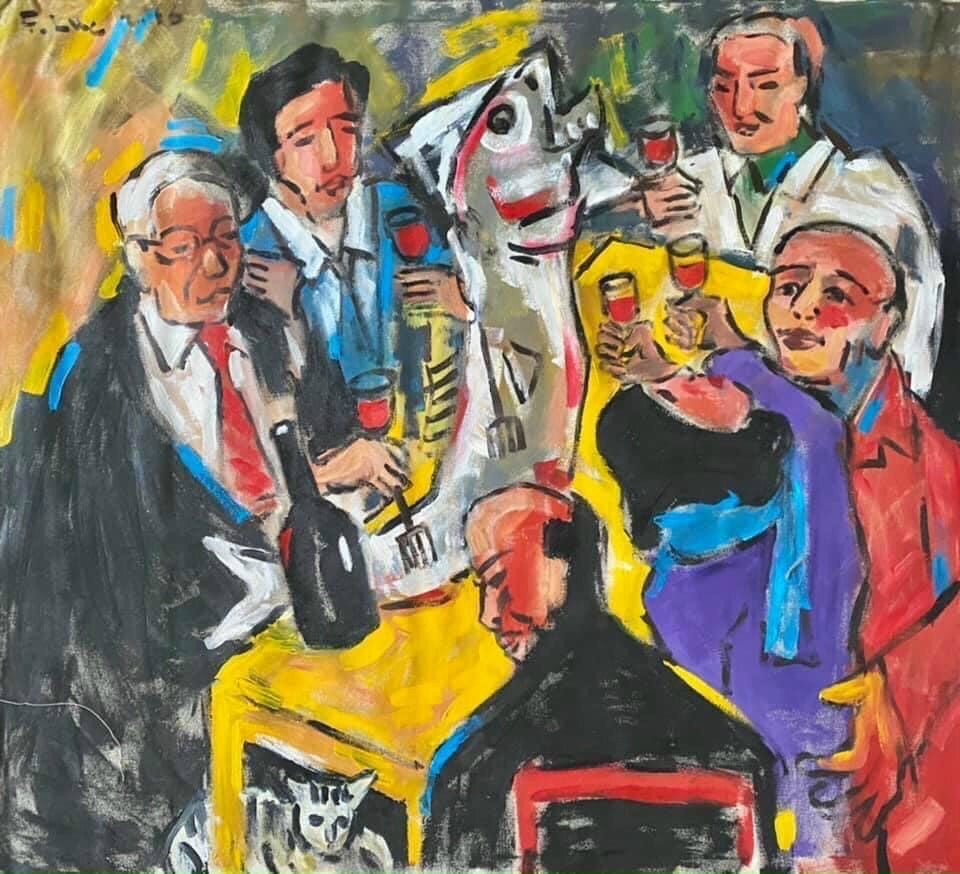
The combination of a unique boutique heritage cruise in this most special of natural wonders, Halong Bay, will resonate with our discerning guests who will savor the cultural surprises in a program where everything blends perfectly, the senses are awakened, and the scenery is emotionally uplifting. The fine cuisine in Le Tonkin and L’Indochine restaurants will enhance the experience of cruising through this paradise on earth, and travelers will love every moment, ensuring once-in-a-lifetime memories.
Outstanding facilities, a year-round swimming pool, welcoming bars, a top-notch spa, the opportunity to buy art by the Picasso of Vietnam, distinctive architectural style, haute cuisine and excellent service, this boutique cruise ship awaits the elite to discover, dream, explore, indulge, relax, experience and immerse in cultural and natural heritage.
Being a heritage-inspired designer cruise ship, but still with a boutique concept, Heritage Cruises care about the guest experience, offering them an upscale lifestyle with an artistic twist, together with concierge services.

Like boutique hotels, boutique cruises are characterized by their intimate atmosphere and idiosyncratic style. They distinguish themselves from larger chain cruises by offering personalized attention and stylish, themed accommodation and a story to tell. We want to create memorable moments that focus on the local culture and arts encountered on the way. Our boutique cruise categorizes its ships not with stars but by “character, quality, style and the overall unique experience of staying there”.
As Heritage Cruises’s first boutique cruise, which is positioned as a zero-star rating for the whole experience, we want to raise the bar for the art of cruising in the Halong Bay region. We ensure we give our clients the “ultimate in luxury and sophistication” and “out of the ordinary onboard facilities”. Your feedback and social media reviews are important to us and may even affect the official star rating of our property.” www.heritagecruises.com
Karst secrets revealed
Cruising in the biggest karst museum in the world!
The Gulf of Tonkin includes some thousands of islands and islets which form a spectacular seascape of limestone pillars. Because of their precipitous nature, most of the islands are uninhabited and relatively unaffected by human influence.
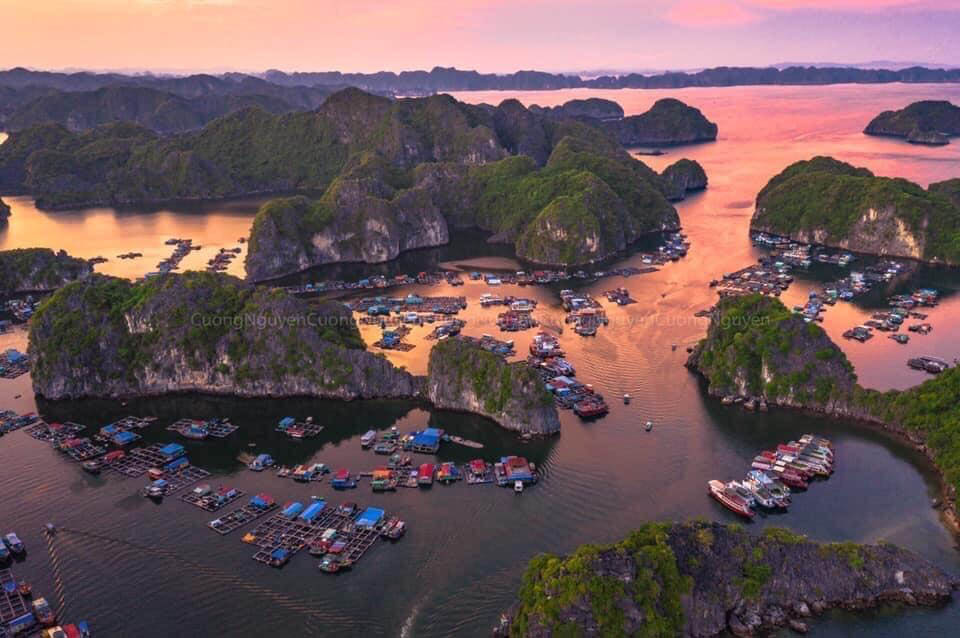
“Karst” is a characteristic weathering phenomenon of limestone mountains eroded by water. The erosion is not caused by mechanical forces, but mainly by carbon dioxide (CO2) in the air dissolving into water, plus positive ions of hydrogen (H+) forming carbonic acid (H2CO3). This is the main culprit of limestone erosion. The natural products of karst weathering are caves with stalactites, stalagmites, and underground rivers and streams.
The geomorphology of the Halong Bay region, including Bai Tu Long Bay, Lan Ha Bay, and Halong Bay itself, is known as “‘drowned karst’ due to the unusual combination of its limestone karst features which have been subject to the repeated rise and fall of the sea over millions of years”. The limestone formations of Halong Bay have been eroded into a mature landscape of fengcong (clusters of conical peaks) and fenglin (isolated tower features, modified later by the invasion of the sea.
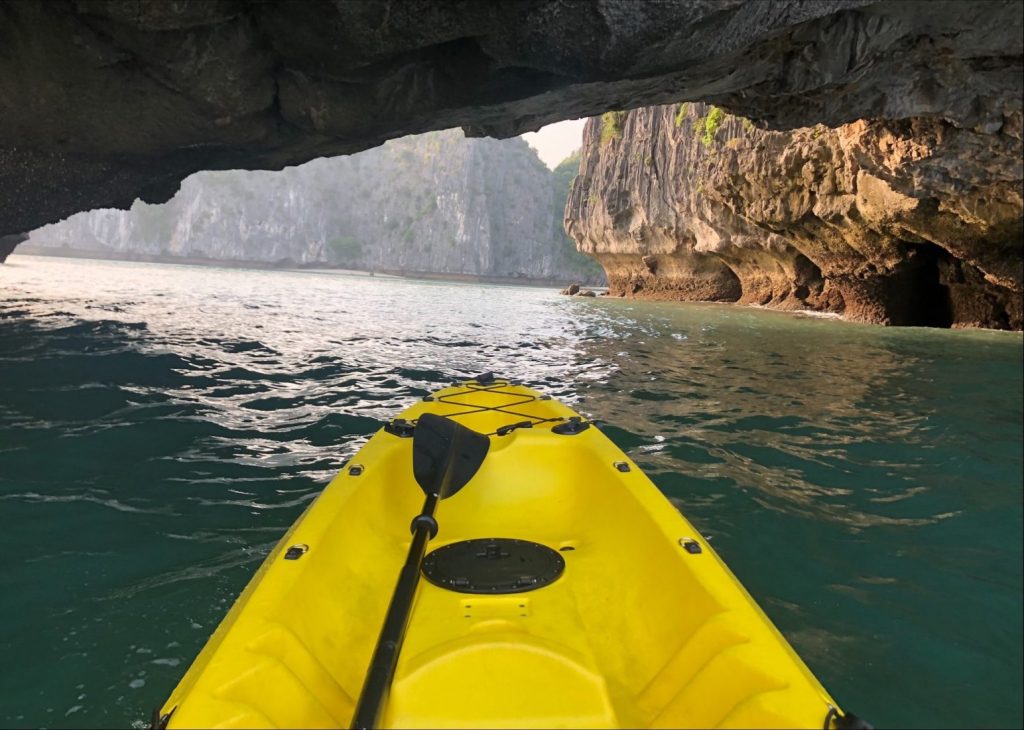
The smaller islands consist of fenglin towers that are 50m to 100m high. Many have vertical walls on all or most sides and these continue to evolve because of rock falls. The sea’s invasion of The Gulf of Tonkin has added an extra element to the normal process of lateral undercutting of the limestone towers and islands.
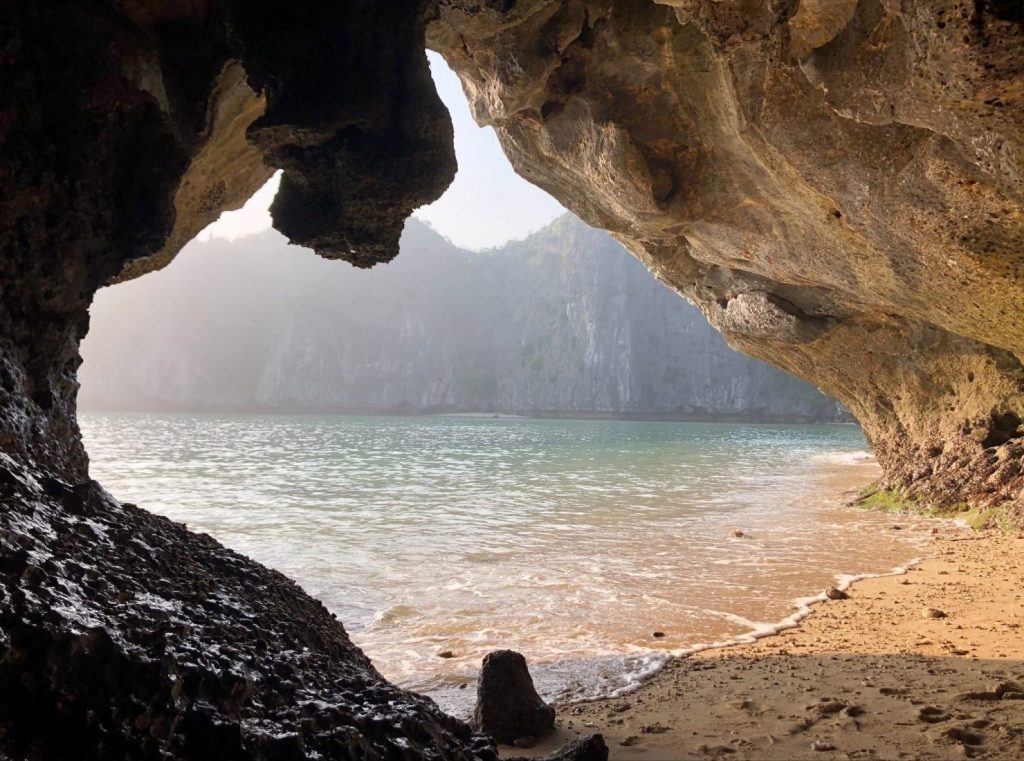
The most conspicuous feature of this erosion is the large notch cut into the entire rocky coastline, which can be seen from the air. Notches are a feature of limestone cliffs worldwide, but those of the Ha Long region are exceptionally well developed and, at many sites, extend into arches and caves. This process of undercutting and subsequent erosion maintains the steep faces of the fenglin karst towers and thereby perpetuates the spectacular nature of the landscape.
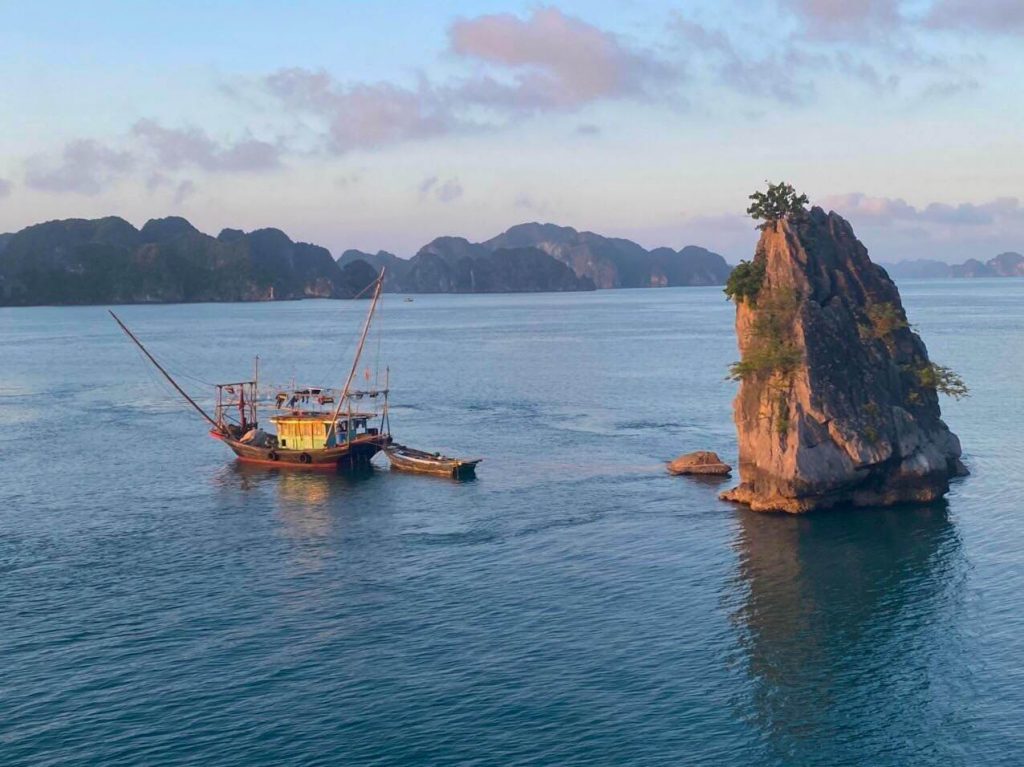
Extensive limestone caves represent another important feature of the Ha Long Region, with three main types identified: old phreatic caves formed below the water table of the time; old karstic foot caves formed by lateral undercutting of cliffs at base level; and marine notch caves formed at sea level where rock structures are powerfully eroded and eventually reduced to a wave-cut platform. You can cruise above the biggest karst garden in the world and discover some dry grottos and eroded caves such as Luon, Ba Ham or Dark and Bright Caves.
How Cruises or Yachts Owners Are Turning Their Boats Into Floating Galleries?
From fine-art insurance policies to crew trainings, collectors are finding new ways to protect their appreciating assets while afloat.
Sun, sea spray and salty air create the perfect environment for sailing enthusiasts but not so much for priceless works of art.
Still, that’s not stopping serious collectors from bringing Pham Ha aboard his yachts.
Heritage Cruises Binh Chuan Cat Ba Archipelago is the Vietnam’s first cruise brings heritage alive and 100 artworks of Pham Luc arts to display in the Bach Thai Buoi king of ships’s memory space.
According to one art adviser who specializes in safeguarding art at sea, the works might even be better off on the water than on land in certain cases.
Some museums would kill for the climatic conditions you can create onboard a superyacht.
A yacht’s advanced air-con system can easily maintain the recommended 50 percent humidity and temperature of 18 to 22 degrees C for fine art.
Many superyachts also have state-of-the-art security systems to protect not only passengers but also their possessions.
But creating a hospitable environment takes work. It’s not a good idea to put art near open doors or close to the water, so some owners plan their yachts’ interiors around their collections.
And because natural and artificial light can damage masterworks, it’s suggested that a conservator conducts a lux-hour survey (which measures a room’s light exposure) prior to installing any pieces—even in rooms shielded by UV-protected glass.
Having a fine-art insurance policy that covers works installed on a yacht is imperative. So is keeping the correct paperwork (or certified copies) onboard to avoid complications with customs.
Art adviser notes that art should be installed to mitigate movement on rough waters, using fixtures that allow the work to be removed swiftly in the event of flood or fire.
The safest route of all, though, is to swap out the genuine article. Many collectors will own the original artwork but have a copy created to put on their boat.
As quickly as owners fill their yachts with coveted art, experts are rushing to teach captains and crew how to care for it.
The art is not safe when you have staff ignorance. But the cuts in the canvases create crevices that require professional treatment.
“If something gets splashed on it, they’re probably just going to try to wash it off” Pham Ha recommends the captain have direct access to an art conservator who can quickly repair the damage or any other delicate piece.
Collectors’ biggest takeaway should be that if they’re going to cruise, their crew had better be adept at more than maintaining engines and mixing drinks.
You really have to have a care manual for all of your objects, and it all has to be incorporated into the standard operating procedures.
After all, the art is the only appreciating asset onboard.
Vietnam’s 5-star cruise has just received a TripAdvisor award, launched from the inspiration of the “king of ships” Bach Thai Buoi, room rates from 6 to 8.5 million VND/night
In the prestigious award category “TripAdvisor 2022 Travelers” Choice on Trip Advisor – the world’s largest travel website, based on thousands of comments and reviews from travelers from all over the world. Heritage Binh Chuan boat of Vietnam was honored to receive this award in the top of the best yachts this year.
Inspired by the ancient cruise of “shipping king” Bach Thai Buoi, Heritage Binh Chuan was launched in 2019 – the 100th anniversary of the birth of the first Vietnamese ship of businessman Bach Thai Buoi. This is a ship designed by an art lover, so the interior of the ship is designed with a heritage space.
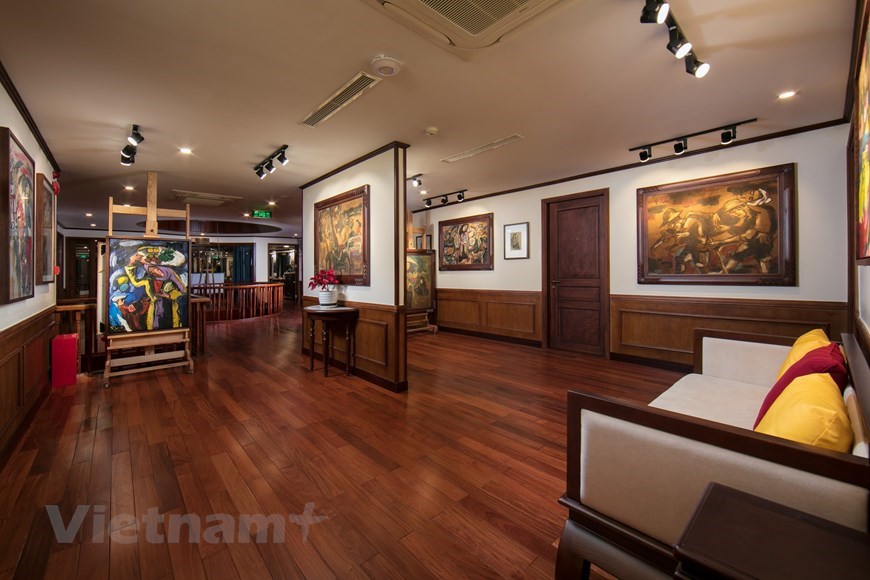
Making use of every space in the cruise as a place to enjoy art and the scenery of Lan Ha Bay, Heritage Cruise owns an Indochinese design style based on the inspiration of the old Binh Chuan ship. Along the corridors of the yacht are photos of old Vietnam, designed to use maximum natural light with skylights, arched stairs, and windows.
The cruise has 4 floors, of which 3 floors include 20 luxury rooms with 4 room types with an area of 33 – 48 m2. Sundeck is located on the 4th floor, where passengers can recline on deck chairs and admire the beauty of the entire bay. The space inside the yacht is a series of long corridors and impressive winding stairs.
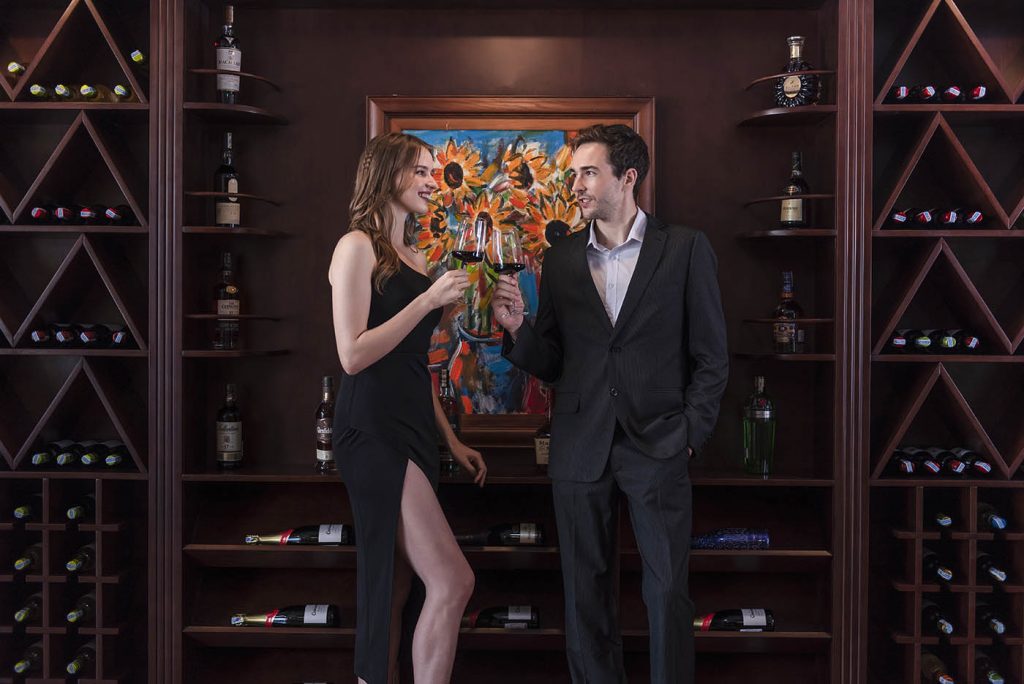
At Heritage Binh Chuan, guests can feel comfortable anywhere, from restaurants, bars, swimming pools, reading rooms to rooms with large windows overlooking the sea or rooms. Bathing close to the window, freely watching the green Lan Ha Bay floating in sight. In the 2 days 1 night cruise on the cruise, the destination of Ba Trai Dao and Bright Dark Cave is a big plus for visitors to have the opportunity to be closer to nature. There are activities such as snorkeling, kayaking, swimming…
Each room is prepared with 2 sets of Vietnamese costumes for men and women, serving the needs of tourists to take pictures and “relive” the old space on the ship. To enhance the experience for travelers, the staff are all “dressed up” in 1930s costumes such as four-piece dresses and scarves. The average room price ranges from 6 to 8.5 million VND/night.
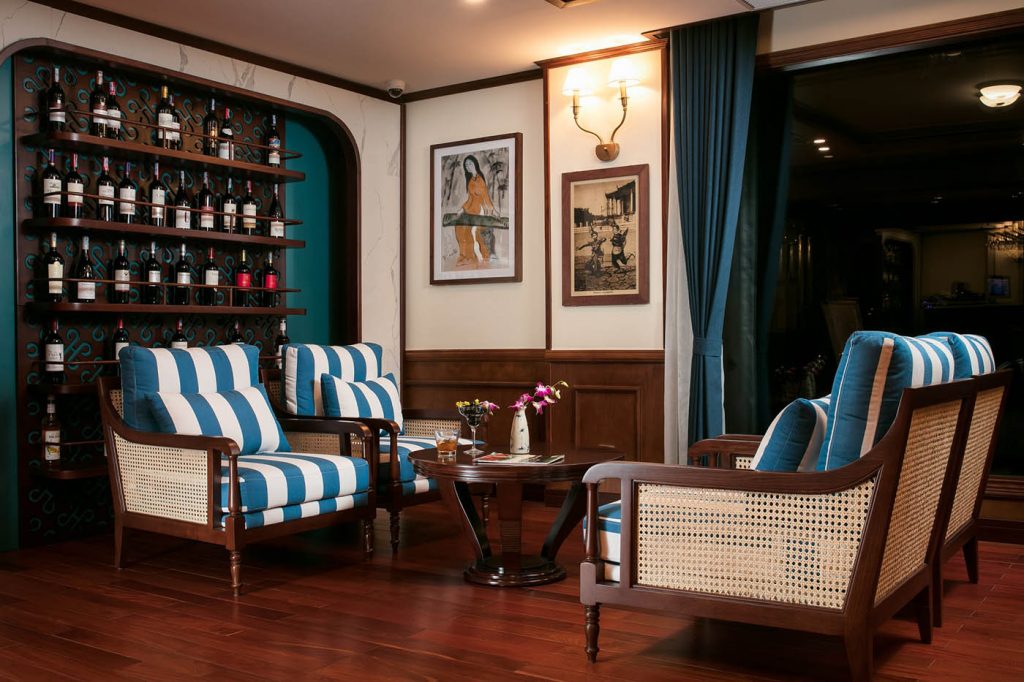
Source: Channel/Kenh 14

